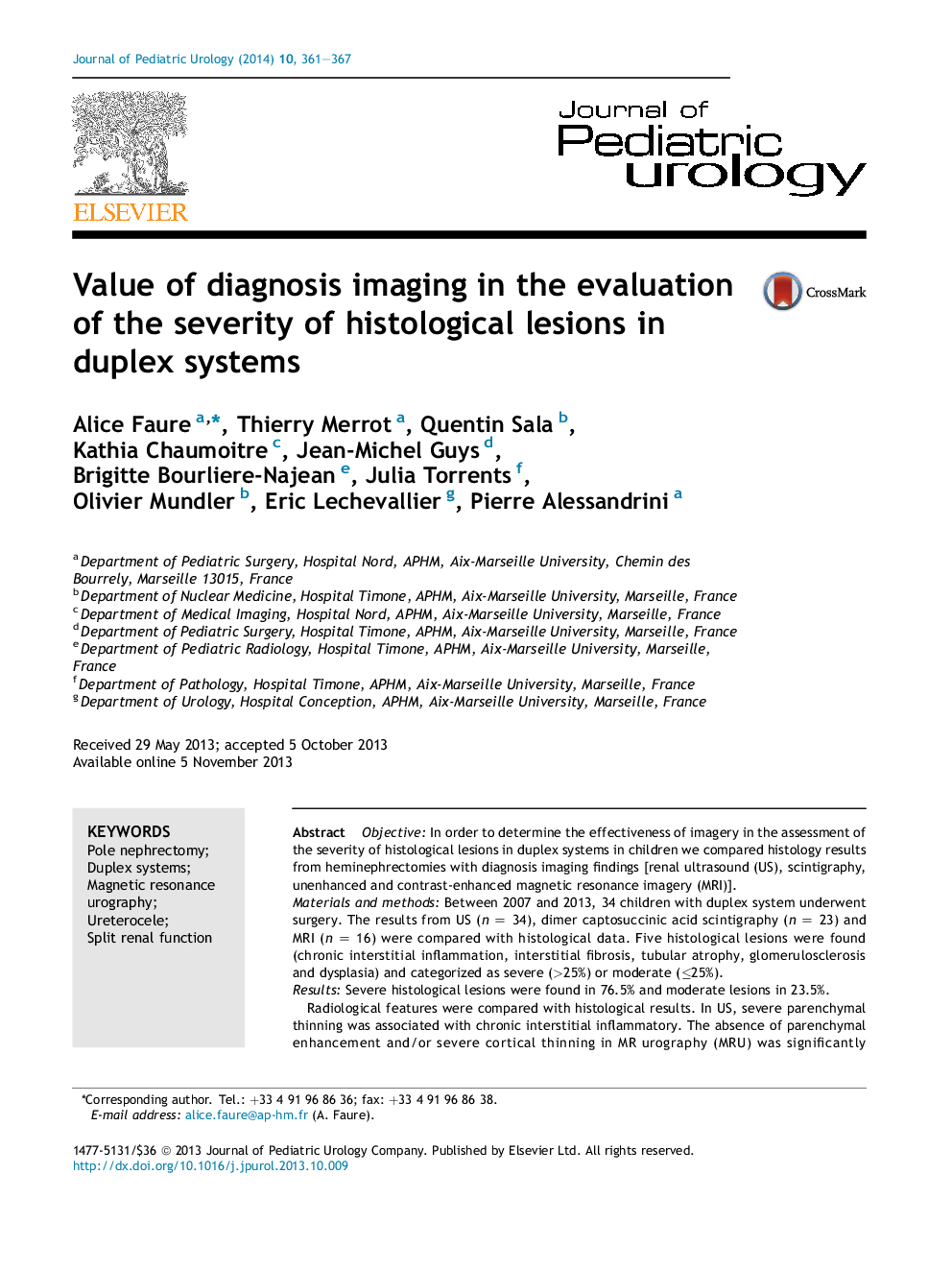| Article ID | Journal | Published Year | Pages | File Type |
|---|---|---|---|---|
| 4162772 | Journal of Pediatric Urology | 2014 | 7 Pages |
ObjectiveIn order to determine the effectiveness of imagery in the assessment of the severity of histological lesions in duplex systems in children we compared histology results from heminephrectomies with diagnosis imaging findings [renal ultrasound (US), scintigraphy, unenhanced and contrast-enhanced magnetic resonance imagery (MRI)].Materials and methodsBetween 2007 and 2013, 34 children with duplex system underwent surgery. The results from US (n = 34), dimer captosuccinic acid scintigraphy (n = 23) and MRI (n = 16) were compared with histological data. Five histological lesions were found (chronic interstitial inflammation, interstitial fibrosis, tubular atrophy, glomerulosclerosis and dysplasia) and categorized as severe (>25%) or moderate (≤25%).ResultsSevere histological lesions were found in 76.5% and moderate lesions in 23.5%.Radiological features were compared with histological results. In US, severe parenchymal thinning was associated with chronic interstitial inflammatory. The absence of parenchymal enhancement and/or severe cortical thinning in MR urography (MRU) was significantly associated with interstitial fibrosis. All poorly functioning poles were associated with severe histological lesions (p = 0.091), but not to a specific category of lesions.ConclusionsMRI sensibility was excellent (90%) in the diagnosis of poorly functioning pole. Severe thinning on US and minimal pole function on MRU can be used to predict the severity of histological lesions.
